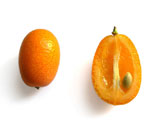SAGES-Evidence-Based Guidelines for Surgical Treatment of Gastroesophageal Reflux Disease
Posted by: admin on: August 3, 2011
Gastroesophageal reflux disease (GERD) has long been recognized as a significant public health concern as heartburn afflicts nearly two thirds of US adults at some point in their lives and accounts for 4 to 5 million physician office visits every year. This article represents a synopsis of the Society of American Gastrointestinal and Endoscopic Surgeons (SAGES) guidelines for the surgical treatment of GERD. These guidelines are developed by the SAGES guidelines committee after a systematic review and grading of the available evidence and are approved by the SAGES Board of Governors.
The following scale for evidence grading was used:
Grade A – High-level, well-performed studies with uniform interpretation and conclusions by the expert panel
Grade B – High-level, well-performed studies with varying interpretation and conclusions by the expert panel
Grade C – Lower level evidence with inconsistent findings and/or varying interpretations or conclusions by the expert panel
Before considering surgery, objective documentation of gastroesophageal reflux is mandatory. This can often be achieved by flexible esophagoscopy if esophagitis or Barrettâ changes are seen but in their absence a 24-hour ambulatory esophageal pH-metry study is needed for confirmation of GERD. When the diagnosis of reflux is objectively confirmed, surgical therapy should be considered in individuals who have failed medical management, opt for surgery despite successful medical management, have complications of GERD, or have extra-esophageal manifestations of GERD such as asthma, hoarseness, cough, chest pain, aspiration. Preoperative investigations that may be needed before surgery include EGD, pH-metry, esophageal manometry, barium swallow, and sometimes gastric emptying studies.
In regards to the optimal surgical approach, the available evidence suggests that laparoscopic fundoplication should be preferred over its open alternative as it is associated with superior early outcomes (shorter hospital stay and return to normal activities, and fewer complications) and no significant differences in late outcomes (failure rates) (Grade A). Nevertheless, antireflux surgeons should be aware that laparoscopic fundoplication takes longer to perform and has a higher incidence of reoperations at least in the short term (Grade A). For patients with typical GERD symptoms laparoscopic antireflux surgery leads to significant improvement in rates of dysphagia, heartburn, and regurgitation (grade A).
It should also be noted that a body of literature suggests that anterior partial fundoplication may be less effective in the long term (Grade B) and retrospective data suggests that partial fundoplication may not be as effective as total in the long run (Grade C). Surgeons who treat GERD and are appropriately trained in minimally invasive techniques may minimize postoperative dysphagia by choosing a partial fundoplication (Grade A) or a short total fundoplication (1.5 to 2 cm). In regards to division of the short gastric vessels, when the fundus can be wrapped around the esophagus without significant tension, no division of the short gastrics seems necessary (Grade A); division should be undertaken, however, when a tension-free fundoplication cannot be accomplished (Grade B). Crural closure should be strongly considered during fundoplication when the hiatal opening is large and mesh reinforcement may be beneficial in decreasing the incidence of wrap herniation (Grade B).
Anterior crural closure may be associated with less postoperative dysphagia, but additional evidence is needed. The placement of an esophageal dilator during the creation of laparoscopic fundoplication is advisable as it leads to decreased postoperative dysphagia but should be weighed against a small risk of esophageal injury (Grade B). Laparoscopic reoperative antireflux surgery is feasible, safe, and effective but has higher complication rates compared with primary repair and should be undertaken only by experienced surgeons using a similar approach to primary fundoplication (Grade B). Like any other surgical procedure, laparoscopic antireflux surgery is subject to a learning curve, which may impact patient outcomes. Therefore, surgeons with little experience in advanced laparoscopic techniques and fundoplication in particular should have expert supervision during their early experience with the procedure to minimize morbidity and improve patient outcomes (Grade B). On the other hand, reoperative antireflux surgery should be performed in a high-volume center by an experienced foregut surgeon (Grade B).
Despite the availability of several randomized controlled trials and metaanalyses the available literature has several limitations including small patient samples, variable reporting of outcome parameters, short follow-up periods, and absence of technique standardization across studies, and single institution studies which introduce bias into the reported outcomes.
Read More on http://www.medscape.com/viewarticle/738281
Search
- drchasrani: Difficult to get such a data, authenticated at that. Try Times of India online library
- rakesh pore: hi, where can i get genuine information about "10 most common drugs sold in india?" i want it for a local project
- nilesh dutta: sir, Plz give detail about MBA Sports Management Thanks and Regards


Leave a Reply